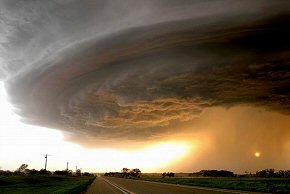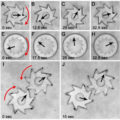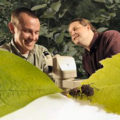
Harnessing the electrical power that is generated naturally when water vapor collects on microscopic particles of dust and other material in the air could provide an alternative to solar power and reduce the incidence of lightning strikes, say scientists at the 240th National Meeting of the American Chemical Society.
“Our research could pave the way for turning electricity from the atmosphere into an alternative energy source for the future,” said study leader Fernando Galembeck, from the University of Campinas in Brazil. His research may help explain a 200-year-old scientific riddle about how electricity is produced and discharged in the atmosphere. “Just as solar energy could free some households from paying electric bills, this promising new energy source could have a similar effect,” he explained. “If we know how electricity builds up and spreads in the atmosphere, we can also prevent death and damage caused by lightning strikes.”
Electrical impresario Nikola Tesla was among those who dreamed of capturing electricity from the air. This is the electricity formed when water vapor collects on microscopic particles of dust and other material in the air. But until now, scientists lacked adequate knowledge about the processes involved in the formation and release of electricity from water in the atmosphere.
Galembeck and his colleagues have been performing laboratory experiments that simulate water’s contact with dust particles in the air. They used tiny particles of silica and aluminum phosphate, both common airborne substances, showing that silica became more negatively charged in the presence of high humidity and aluminum phosphate became more positively charged. High humidity means high levels of water vapor in the air – the vapor that condenses and becomes visible as “fog” on windows of air-conditioned cars and buildings on steamy summer days.
Galembeck said that a similar approach might help prevent lightning strikes. He envisions placing hygroelectrical panels on top of buildings in regions that experience frequent thunderstorms. The panels would drain electricity out of the air, and prevent the build-up of electrical charge that is released in lightning. His research team is testing metals to identify those with the greatest potential for use in capturing atmospheric electricity and preventing lightning strikes. “We certainly have a long way to go. But the benefits in the long range of harnessing hygroelectricity could be substantial,” Galembeck said in conclusion.
Related:
Lightning unleashes potent radiation cocktail
Ball lightning all in the mind, say physicists
Terrestrial Gamma Ray Mystery Deepens
Wireless Power Transfer Revisited








Comments are closed.